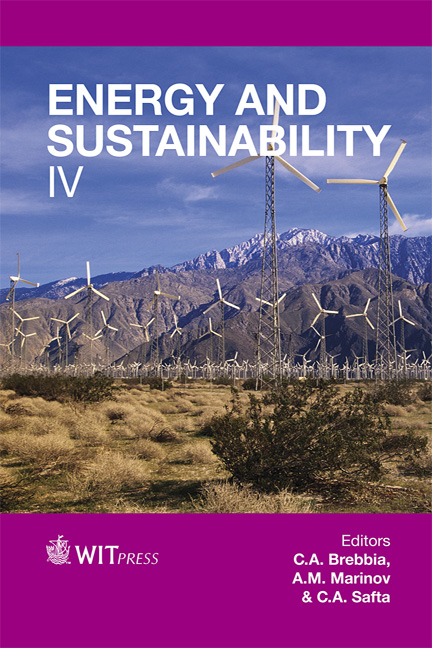Clean And Sustainable Electric Energy In Romania
Price
Free (open access)
Transaction
Volume
176
Pages
13
Page Range
3 - 13
Published
2013
Size
1,468 kb
Paper DOI
10.2495/ESUS130011
Copyright
WIT Press
Author(s)
C. A. Safta, A. M. Marinov, G. E. Dumitran & B. Popa
Abstract
UE policies have played a leading role in protecting the environment by reducing emissions of greenhouse gases, and minimizing environmental impacts of energy use. Romanian National Renewable Energy Action Plan (NREAP) has promoted the use of energy from renewable sources in accordance with the Directive 2009/28/EC of the European Parliament. In this regard, renewable energy resources appear to be the one of the most efficient and effective solutions for clean and sustainable energy development in Romania. Despite the current economic downturn, electricity consumption in Romania for 2014–2020 is expected to have a growth of 2–3% per year, estimating a 4.6% gross domestic production (GDP). Romania’s potentials for electricity generation from renewable resources is represented by: hydro energy with a theoretical potential estimated to 40 TWh in hydro power plant with more than 10 MW and 6 TWh in the small ones; wind energy with a theoretical potential estimated to 23 TWh and photovoltaic energy estimated to 1.2 TWh (source Romanian NREAP). From estimations and theoretical figures to reality regarding renewable energy in Romania the evolution is spectacular because in 2007 the hydro electric energy production was representative with 15.7% and renewables were no longer mentioned, and in 2013 (04.03.3013), the figures were 30.0% in hydro power and 6.5% wind (www.transelectrica.ro). According to NREAP, the expectations in the wind energy installed capacity were 1,850 MW in 2012 and the real installed capacity was 1,905 MW, with 3% growth. This paper deals with present and future prospect situation of renewable energy and the role of hydropower in Romania. This study shows that there is an important potential for
Keywords
renewable energy, small hydropower, wind power, photovoltaic, sustainable development, environmental impact





